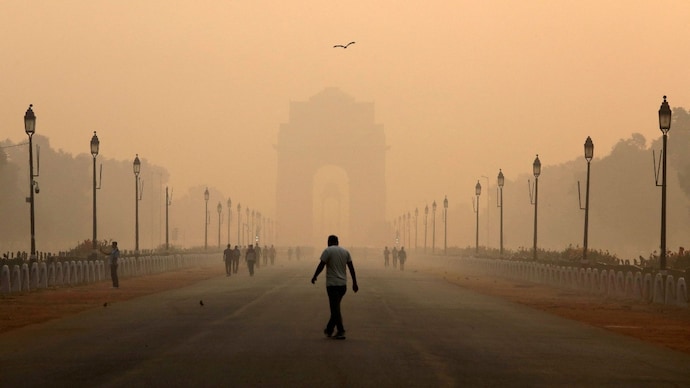Air pollution causes more than 7% of daily deaths in 10 cities, Delhi tops: Study
A Lancet study says air pollution causes 7 per cent of deaths in 10 major Indian cities, with Delhi having the highest annual mortality rate (12,000) caused by PM2.5 concentrations that exceed the World Health Organisation’s safe limits.

More than 7 per cent of daily deaths in 10 major Indian cities are linked to air pollution caused by PM 2.5 concentrations exceeding the World Health Organisation’s (WHO) safe limit, according to a study published in The Lancet Planetary Health journal.
The study analysed data from cities such as Ahmedabad, Bengaluru, Chennai, Delhi, Hyderabad, Kolkata, Mumbai, Pune, Shimla and Varanasi. It showed that levels of PM2.5, the smallest pollutants that penetrate deep into the lungs and the bloodstream, were above the WHO safe limit of 15 micrograms per cubic metre on 99.8 per cent of days.
The study said that in Delhi, the biggest share of daily and annual deaths are caused by PM2.5 air pollution, which consists of particles with a diameter of 2.5 micrometres or less. These harmful particles originate mainly from vehicular and industrial emissions.
The national capital records around 12,000 air pollution-related deaths every year, accounting for 11.5 per cent of the total deaths.
The researchers said daily exposure to PM2.5 pollution in Indian cities increases the risk of death, and locally generated pollution is likely a cause of these deaths.
A startling finding of the study indicated that an increase of 10 micrograms per cubic meter in PM2.5 concentrations measured over two days correlated with a 1.4 percent increase in daily mortality. This risk factor doubled to 2.7 percent when observations were limited to levels below the Indian air quality standards, which are much less stringent than World Health Organization guidelines.
The World Health Organisation recommends a safe exposure limit of 15 micrograms per cubic metre over a 24-hour period, while the Indian standard allows 60 micrograms per cubic metre.
City-specific data showed that an increase of 10 micrograms per cubic metre in PM 2.5 levels in Delhi led to a 0.31 per cent increase in daily mortality rate, while in Bengaluru the increase was 3.06 per cent.
The causal model used by the researchers found a stronger association between daily exposure to PM2.5 and locally produced pollutants, indicating that local pollutants may contribute significantly to these deaths.
The study also showed that the causal effects were particularly strong in cities with low overall air pollution levels, such as Bengaluru, Chennai and Shimla.
The research, which is the first multi-city time series analysis of short-term exposure to PM 2.5 and daily mortality in India, analysed nearly 3.6 million daily deaths across ten Indian cities from 2008 to 2019. Other cities included in the study were Ahmedabad, Hyderabad, Kolkata, Pune, Shimla and Varanasi.
The international team for the study included researchers from Banaras Hindu University, Varanasi and the Centre for Chronic Disease Control, New Delhi.
Joel Schwartz of Harvard University, a co-author of the study, emphasized that lowering and stricter enforcement of air quality limits would “save thousands of lives each year.”
He stressed that effective methods of pollution control are already in use in other parts of the world and these need to be urgently implemented in India too.
The WHO has stressed that almost every person on earth is exposed to air pollution above the recommended levels, posing serious health risks. Long-term exposure to PM2.5 particles can cause stroke, heart disease, lung cancer, and many other respiratory diseases.





